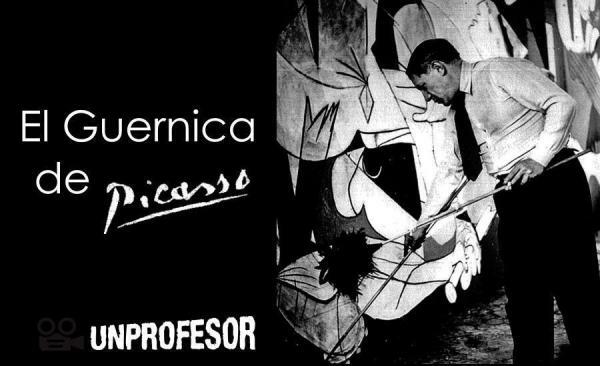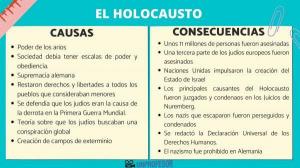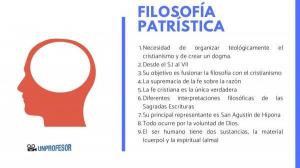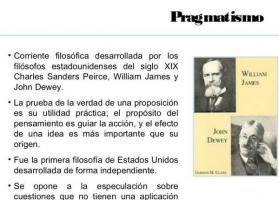Pablo Picasso - Short Biography

Pablo Picasso was a Spanish painter that has undoubtedly gone down in history for being the creator and protagonist of one of the most characteristic movements of the 20th century in the plastic arts, the cubism, a style that over time spread throughout the world, exerting a great influence on other artists of the time. In addition to painting, other genres such as sculpture, engravings, drawings, ceramics, the illustration of books, as well as the costumes and design of scenographies for the assembly of works theatrical.
Next, in this lesson from a TEACHER we offer you a abridged biography of Pablo Picasso, a generous, bohemian man, in love with the Mediterranean sun, beautiful women and simple people.
Index
- Pablo Picasso - Childhood
- Parisian stage in the biography of Picasso
- Stage of abandonment of cubism
- Last years of Picasso's life
Pablo Picasso - Childhood.
Pablo Ruiz Picasso was born in the city of Malaga October 25, 1881. His father, José Ruiz Blasco, was a drawing teacher and although his childhood turned out to be somewhat complicated due to economic difficulties, the bond between father and son was very close thanks to the common taste for drawing that they both had.
Pablo at that time was known to be a discreet, lazy and somewhat distracted child. When Picasso was only 10 years old (1891), the father's work made the whole family move to La Coruña and it was here that for the first time Pablo Picasso took his first brushes and easel beginning in the subject of painting before the watchful eye of his father admiring the talent of his son.
Four years later, in 1895 the family had to move again, but this time to Barcelona. Barcelona was at that time the artistic capital of SpainWell, there was an economy, but above all cultural development. His father, seeing the enormous drawing capacity of Pablo, decides to send him to Madrid so that this studied Fine Arts, and so it was, indeed, by the year 1897 it already obtained its first mention honorific with one of his first worksScience and Charity, full of that great academic realism.
By 1898 he dared to give his first solo exhibition in a bar very frequented by him, along with other artists and writers in Barcelona "Els Quatre Gats”.

Image: Scentertainer
Parisian stage in the biography of Picasso.
We continue with this abridged biography of Pablo Picasso to enter now into his life in Paris.
Something that was continually on the mind of Pablo was to make a trip to Paris, another of the artistic and cultural capitals of the world. moment, so in 1900 he had the audacity and the audacity to group some of his paintings and drawings, selling three of them to what would be its first dealer Petrus Mañach, who ended up offering him the amount of 150 francs a month for an entire artistic work for a year. In this way we could say that from this moment Pablo was already a professional painter, making himself known and signing by his second maternal surname, Picasso.
Between Barcelona and Paris (1900 -1904) is when it develops its famous "blue stage”, Highly influenced by the symbolism and known thus for being the predominant color blue in the paintings. In 1906 he settled permanently in Paris in a hostel shared with other artists of the time who, like him, did not They had enough money to be able to afford to live alone in a house, so there he meets Juan, also a Spaniard. Gray.
During these years other of Picasso's stages take place, the call "pink stage”(1905 -1906), where most of his works reflect a new world, the world of the circus for which he felt a great admiration, for the harlequins, the acrobats, acrobats... painted with those pinkish hues that sometimes alternated with the blue or gray.
He also made friends with other artists, Guillaume Apollinaire, Georges Braque, and with the dealer who accompanied him throughout his life, Daniel-Henry Kahnweiler.. It was with the artists mentioned above along with others who influenced the creation of a new artistic movement, Cubism, being spearheaded by Picasso and whose experimental work was nothing more and nothing less than Les Demoiselles d'Avignon (Las Señoritas de Avignon), which was a scandal in the face of a style that drastically broke previous canons, destroying what was created to invent something new.
However, the receptivity to the multiple concerns of the early twentieth century made them win many followers, at the same time that Picasso exhibited in museums in New York and in Munich. And so, seeing its admirable repercussion, he launches himself to invent what we know as the synthetic cubism, in which the collage technique is added to his paintings.
On many occasions Picasso has been crossed out and linked to abstract art, and although it is true that many of his paintings border on abstraction, he never considered himself an abstract artist.
Stage of abandonment of cubism.
We continue with this short biography of Pablo Picasso to talk about a new stage in the painter's life. In 1914 the First World War broke out and Picasso almost completely abandoned cubism, that at that time they referred to this as a degenerate art and took refuge in other artistic paths such as in taking charge of the sets of ballet, theater, staging for renowned musicians such as Erik Satie.
In these he meets a new love that of the dancer Olga Clochlova with whom he ends up marrying in 1918 and until 1925 he was working for several ballets as the only way to channel his pictorial evolution. In 1930, he acquired a large amount of money after selling one of his paintings, a portrait of his mother made around 1896.
This allowed him to buy a country villa in Boisgelup and travel for more than a year around Spain, where he met Teresa Walter with whom he had her first daughter and it cost him a divorce from the dancer; However, the judge refused to grant it and Picasso faced such a situation and out of spite fell in love with Dora Maar, a French painter and sculptor.
With the Outbreak of the Spanish Civil War, Picasso ideologically allied himself with the Republican party, It was a time when he even offered to be the director of the Prado Museum, but he never wanted to reject such an offer. He suffered the entire process of defeat as the national troops were victorious.
In that period, specifically in 1938, an international exhibition took place in Paris and La República. (legitimate government at that time) commissioned Picasso with other of the best-known paintings of him in history Of art, the Guernica, a commemorative painting alluding to the war period, specifically to the bombing that the city suffered. In this other lesson from a PROFESSOR we will discover the meaning of Picasso's Guernica.

Last years of Picasso's life.
And we will finish this abridged biography of Pablo Picasso speaking, already, of the last stage of him. In the last of his life he did everything: engravings, paintings, sculptures, ceramics (stage known as Vallauris)... And he did it in an almost Routine because he made up to 20 versions of the same song, yes, with the certainty that, if he did them in the morning, they would be sold in the afternoon.
He also showed interest in lithography, as well as the young Françoise Guillot, a young and beautiful painter with whom he will have two children: Claude Picasso (1947) and Paloma Picasso (1949). Sylvette, was another of the women for whom he showed his platonic fascination, a young adolescent with a beautiful and delicate white face and long blond hair who accepted pose for him in exchange for offering him one of those portraits, a deal that Pablo undoubtedly accepted and as a result gave rise to one of the best-known series of the painter. Jacqueline Roque was his last and also young woman with which he maintained a relationship until 1957.
Picasso worked tirelessly until the end of his days, hardly suffering from the aging process and any illness, so he aged in an extraordinary way until 1973, the year in which he died in his house in Mougins (France) at the age of 92. He also passed away with the great satisfaction of be able to witness one of the largest exhibitions held in Paris in 1966 on the occasion of his 85th anniversary.
It was quite a great triumphal farewell since it had practically a million visitors and where works were exhibited from its initial period with that symbolist character, passing through the different stages (blue, pink ...), Cubism... where he came to show the world that Picasso had been a great creator as well as a great destroyer, since he created to return to start.
If you want to read more articles similar to Pablo Picasso - Short Biography, we recommend that you enter our category of Story.



